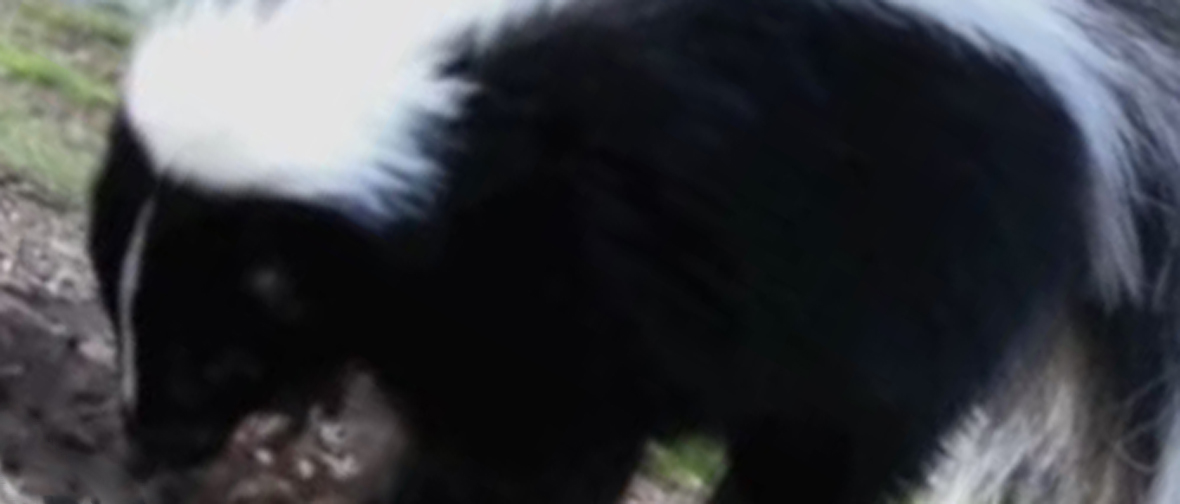Why do skunks dig?
Skunks are known to be a nuisance because their feeding and burrowing habits are in conflict with humans. They can burrow under buildings and porches and they can enter into foundation openings. The refuse and garbage found outside may be disturbed by skunks, and the skunks can damage beehives in order to get the honey. There are times when they can feed on corn and eat the lower ears. When the cornstalk has been knocked over, the raccoons are the ones to blame. When the damage is on the upper ears, then it was probably caused by squirrels, deer and birds. The skunks will dig holes in lawns, golf courses and gardens looking for insects and grubs that are found within the soil. Holes will appear with openings of 3 to 4 inches or 7 to 10 cm. They are cone shaped holes with patches of upturned earth. There are many animals that can dig, including domestic dogs. The skunks will also kill poultry and eat the eggs. They will not climb fences to get poultry; only raccoons, weasels and rats can do this. When the skunks have access to a chicken coop, they will eat the eggs and can kill one or two animals. The eggs are opened at one end while the ends are crushed inward. Weasels, dogs, raccoons and minks will kill ducks and chickens.

Sometimes you may never know that you have a wild animal problem until you walk in the yard and find that there are perplexing piles of soil on the lawn or in the flower beds. You will want to know the type of critter which made such a heap. You will find that many animals will be visiting your yard, and the common reason why they will do this is to find lodging and food. The season will also influence the digging. Sometimes the damage can take place in the fall or in the spring. When it is in the fall, the animals want to get all the calories they are able to get to prepare for the winter. When the animals are fatter, then they increase the chances of surviving the cold months. During spring, the same animals will be looking to regain the weight. Food hunting is a job done by every animal, and it is easy to identify which animal did it.
To determine if it is a skunk, look for the following clues. The soil disruption will take place overnight since the skunk is a nocturnal feeder. The hole will be around the size of the skunk nose because the skunk will press the nose in the soil while digging with their front and long claws. The skunk may make many holes which coalesce in one area and the area may look like it had been tilled.
You may also want to read:
Go back to the Skunk Removal home page or email us for more info about Why do skunks dig?

